Update: the photo above shows a rice harvesting machine cutting down the rice plants. Later a woman was stuffing the stalks into the machine and I think it was separating the grains from the stalk. (October 14)
I’ve been thinking about this rice post for a few weeks. So I’m going to start it now, Tuesday, September 27, and see where it goes. There are rice paddies all around us. I thought that rice was grown in large, rural fields over acres with lots of water flooding the plain. Stalks of rice plants for miles and miles. Well, here in Minoh there are rice paddies tucked in between houses, in between stores, by the gas station, next to restaurants, just off the busy main road and growing alongside winding bike paths. From what I gather, at least some of them are owned by individuals who take care of their little square like a rice paddy garden.
I’ve never seen a rice plant close up and I had no real idea exactly how it was grown. So here are some photos of early rice plants down the street from our house. I took these a few weeks after we arrived, around late August.
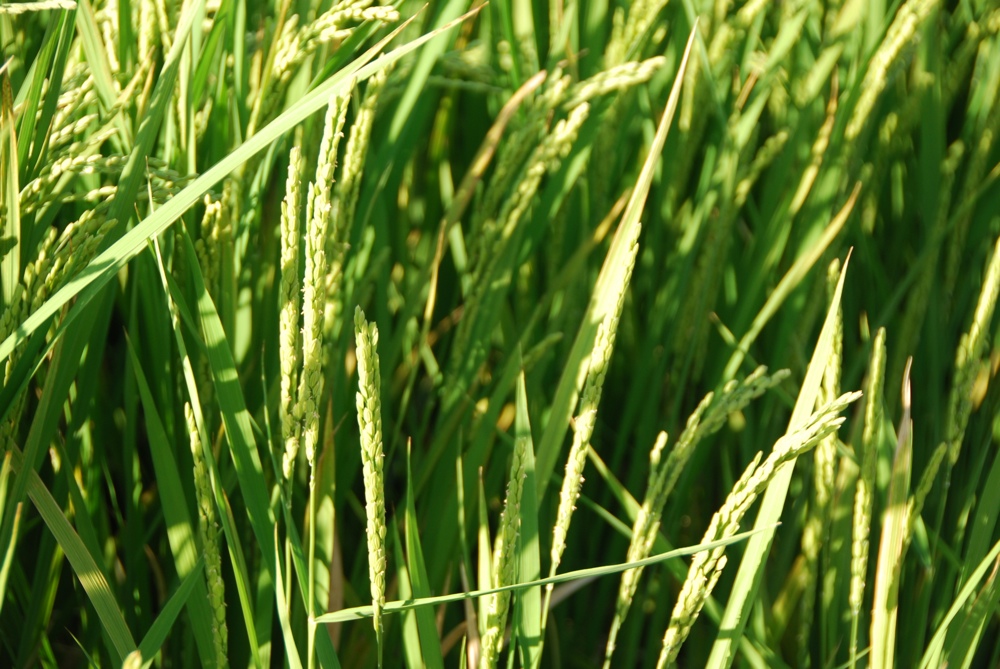
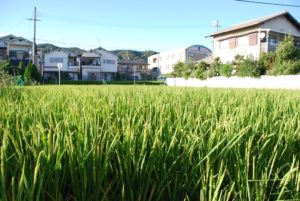
As the weeks go by you can see the changes in the rice plants. They start out short and completely green. You can see from these photos below, taken in early September, that as it has matured the rice has gotten droopy and has turned a pale yellow color. It’s fun to monitor the rice progress since it’s everywhere. When Mayumi came to visit from Sapporo even she was surprised by Minoh’s urban rice fields.
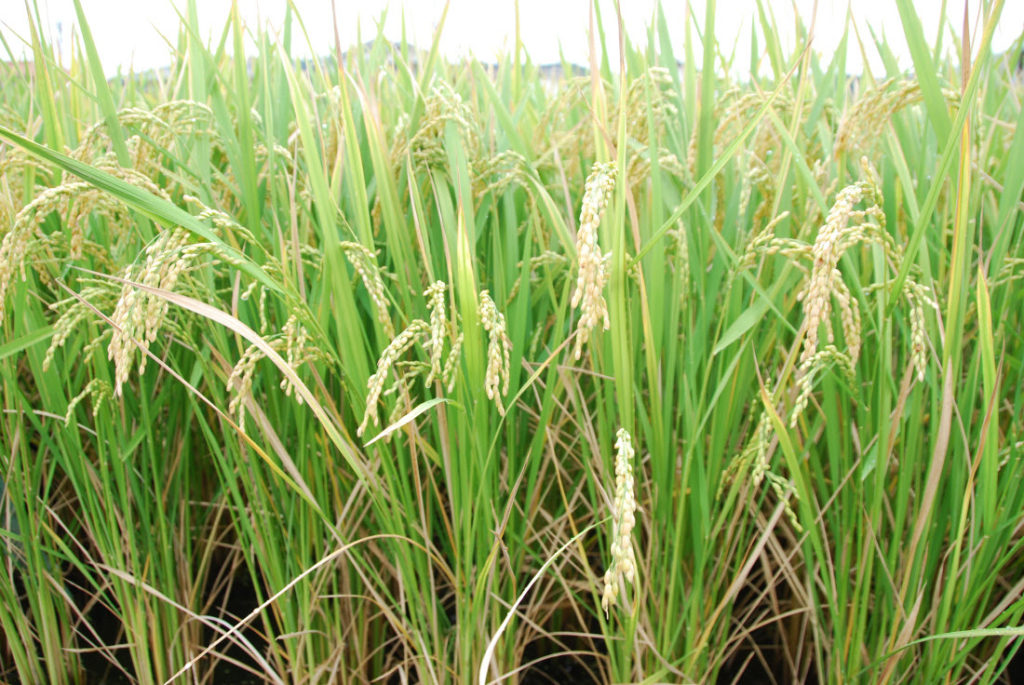
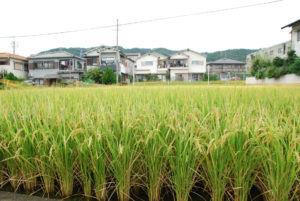
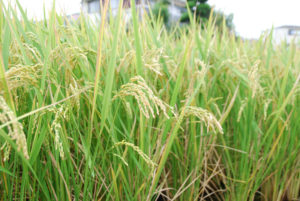
In my Japanese language class, one day the teacher asked each person in class if they liked to eat rice. Most of the students said yes, they either like or love rice! But the British student said rice is so-so. Rice is pretty much eaten with anything here – some people even like it with noodles. But when I go to the grocery store, here in Japan and at home in California, I don’t think it’s particularly cheap. There’s white rice, brown rice and organic rice and organic brown rice and about a 100 other varieties and some of them are very expensive. There’s new crop rice and bleached rice, enriched rice and rice from different regions that have special cache. Selecting rice can be difficult if you really care about your rice. The other day Kaiyo actually won a small bag of rice from a contest at the mall! We will see if free rice is tasty too.
My new friends Esther and Mayu took me to a special grocery store called Mimasaka this week. Mayu drove us there. All three of us are from California! Esther is from Tarzana in the Los Angeles area and Mayu lived in both Palos Verdes and Santa Clarita, also Southern California. Esther said we could buy custom rice ordered from a rice milling machine there. I’m looking for a brown rice that my kids will enjoy. Mimasaka is not very far from the kids’ school, but it is up a fairly steep hill. A bike ride would be possible, but probably not enjoyable – for me anyway!
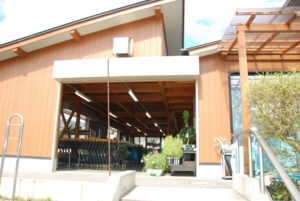
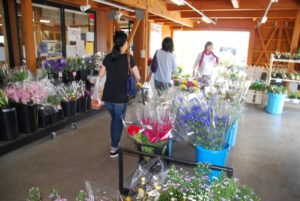
The rice counter is interesting. Mayu speaks Japanese and Esther knows the rice ordering process so between the two of them we ordered custom rice. There is a sample box with several compartments, like a mini tackle box. Each compartment has different shades of rice and they are numbered from 1-9 (in odd numbers only!). Low numbers are for the brownest and high numbers for the whitest rice. I picked 5 for the middle road color. Five kg of rice costs 1400 yen plus you have to buy a reusable rice bag for 100 yen. Is that expensive? When you combine yen and kg I can’t even process how that compares to US rice prices.
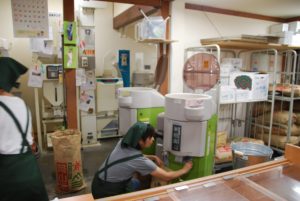
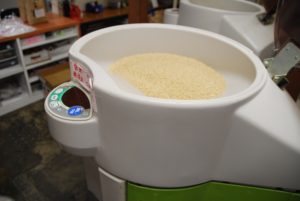
The ladies pour the brown rice into the machine and it grinds the brown bran layers off to your desired preference. Then she asked me to approve the rice. Looked good to me! She also asked me if I wanted to take home the fine bran outer layer that results from the milling process. It is called nuka. I don’t know how to use nuka but it is for pickling vegetables and making something called nukazuke. I bet I can find someone that likes it to give it to so I said yes. She bagged the rice and the nuka and sent me on my way. Mimasaka is kind of like a farmer’s market, too. It has a lot of fresh veggies and a few gourmet items.
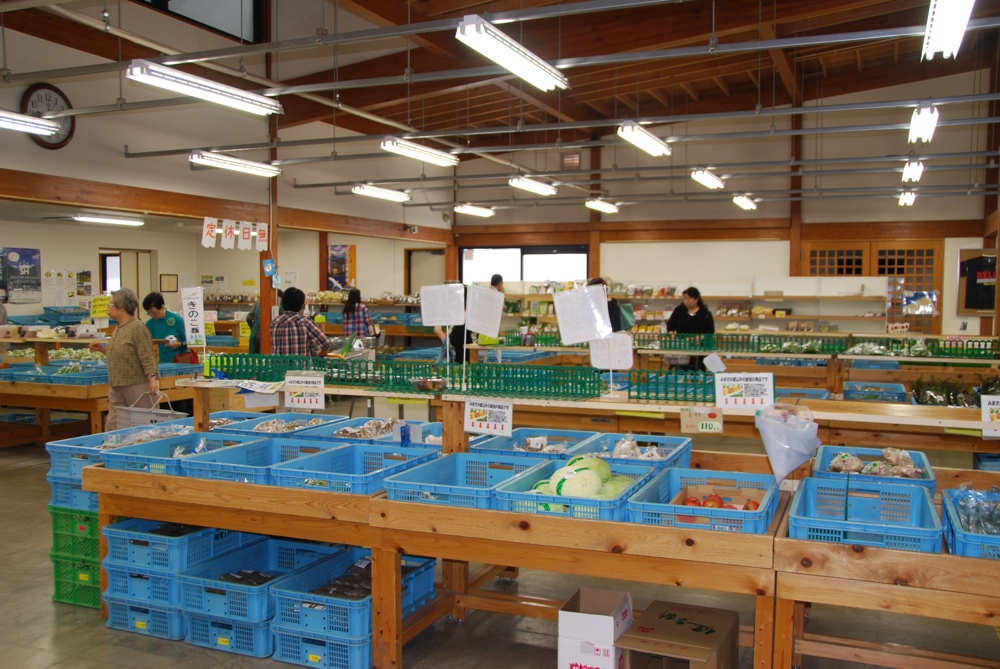
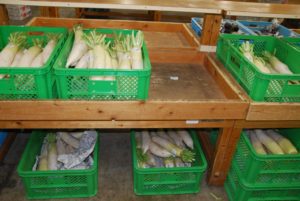
Daikon (like radish)
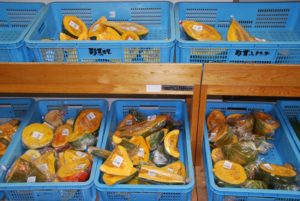
Kabocha (winter squash, like pumpkin)
Here is a very condensed version (edited by me) of rice harvesting from the website madehow.com: a forum for how products are made…
Harvesting:
Once the plants have reached full growth (approximately three months after planting) and the grains begin to ripen—the tops begin to droop and the stem yellows—the water is drained from the fields. As the fields dry, the grains ripen further and harvesting is commenced. Depending on the size of the operation and the amount of mechanization, rice is either harvested by hand or machine. By hand, rice stalks are cut by sharp knives or sickles. Rice can also be harvested by a mechanized hand harvester or by a tractor/horse-drawn machine that cuts and stacks the rice stalks.
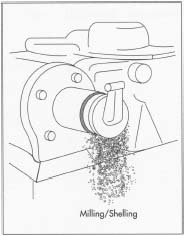
The milling process that produces white rice also removes much of the vitamins and minerals found primarily in the outer bran layers. Further processing is often done in order to restore the nutrients to the grain. Once complete, the rice is called converted rice.
[Read more about how anything is made: http://www.madehow.com]
There are more details on how rice comes to market so if a bigger picture with a more complete ending to the rice story is needed please look it up. Or just enjoy some more rice photos from our bike route. These were taken just the other day (late September) so you can see how the rice is even darker than the rice plants in the above photos that were taken much earlier.
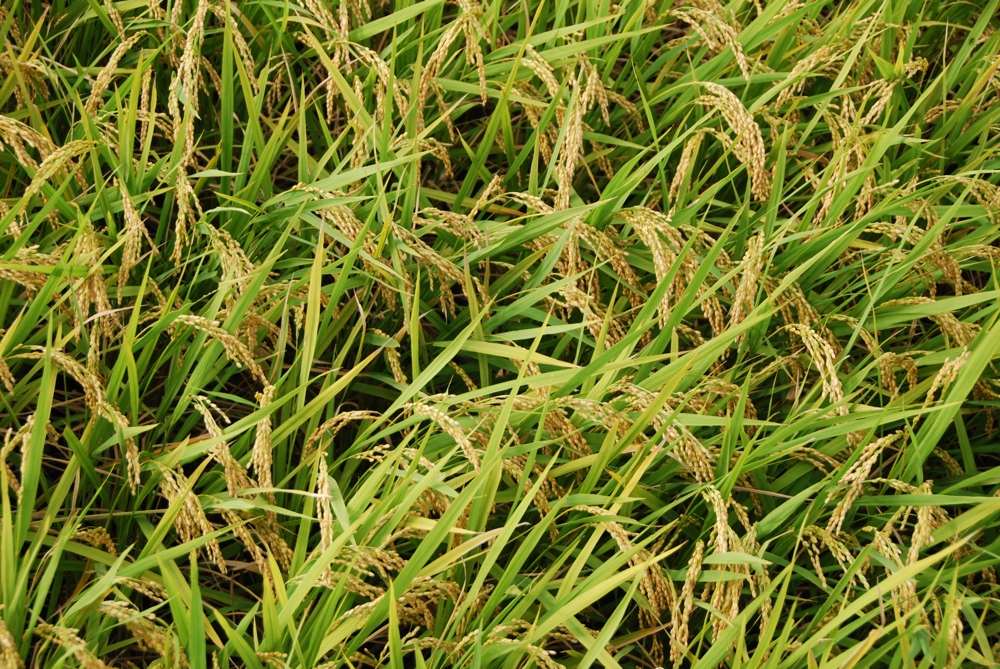
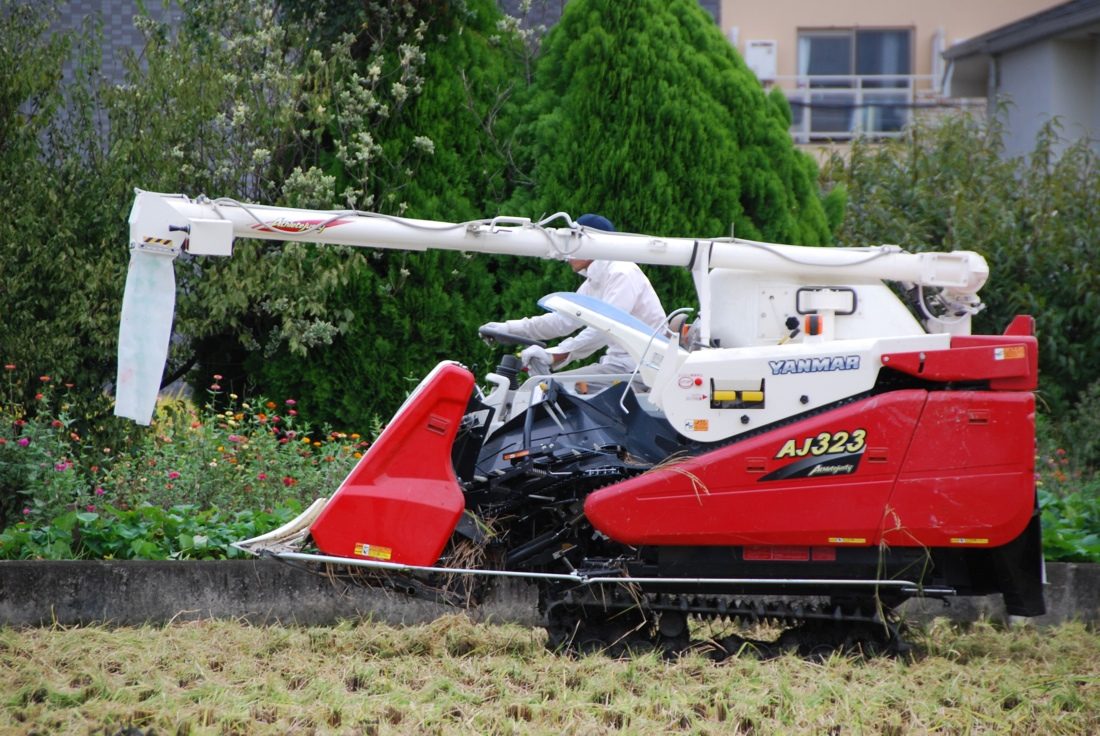

Comments (7)